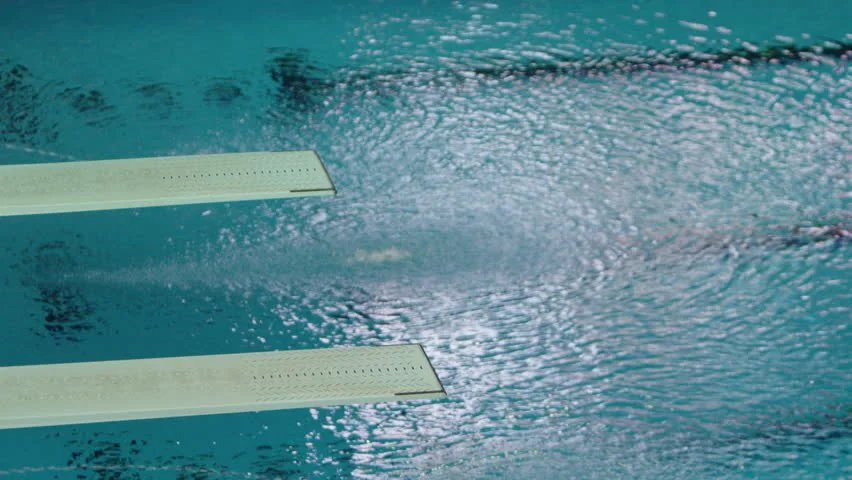“The Spray Across the Water”
Indicators of Mission Speed
In the sport of high diving there are twists, turns, and flips that take place within seconds of knifing into the water. Once the diver jumps from the platform or board they are relying on years of coaching, training, and knowing when to make a specific move at a certain height from the water. So, the diver must know how high they are at every given moment of the dive.
As they move at speeds of over 35mph it is incredibly dangerous if they hit the surface of the water incorrectly. In order to assist divers with their perception a jet of water is shot across the surface of the water. This helps the diver to judge depth and height. Without that point of reference, the diver may pull out of a twist or any number of mistimed maneuvers that will at a minimum cost them points or worse a serious injury.
Leadership involves directing and guiding people, and once the ‘train has left the station’ (to mix metaphors) to stop or turn at the wrong point could cause disaster. The leader needs a ‘spray across the water’ or some indicator of how fast they are moving and where they are in the process. If the leader moves too fast or too slow it could cause danger to the mission – and they need awareness of where they are – which often times is difficult to determine if you are moving a what feels like mac speed.
How do we know how fast we are going?
How do we know when it is time to deploy or wait?
Indicators of Mission Speed
- Grumbling and Complaining; Once you are moving your group from one place to another grumbling and complaining may be a sign you are going too fast. Create channels or avenues so that you can get the information you need – if they only complain behind your back you may never know until it has caused damage. Grumbling and complaining may also be an indicator that the mission is moving forward after years of non-movement.
If you are walking around in the desert in circles for forty years, does it really matter how fast you are going? (see Joshua 5:6)
- Rituals and Celebrations; After you have been traveling for some time you may cycle through events that come year after year (Christmas, Easter, etc.) In the church world there may be annual celebrations – these give you a feeling of tradition and stability – but they may also pull you from your mission if can’t explain why these events are important. One of these annual ‘rotations’ for the leader may be vacations, breaks, get-aways, etc. Time away from the mission may help to determine how healthy you are and the health of the mission.
- Staff & Leadership Turnover; Another indicator of timing is how fast you have turn over in key positions. Long term volunteers, staff, etc. may be an indicator that they feel appreciated, and understand the importance of the mission. A frequent or high turn-over may indicate that you may be lacking in the above-mentioned areas. If your people are getting burned-out it may be an indicator that you need to slow down. There must be a balance of caring for people and accomplishing the mission. Don’t treat your people as though they are disposable.
- Accomplishing Short-Term Goals; Again, we are looking at indicators of speed and the ability to make moves at the right time. So, there should be a series of weekly, monthly, or short term goals that are being accomplished (or not being accomplished) on a regular basis – and are these things getting accomplished with excellence? If they are not, you may be moving too fast. If they are, it may be time to things up. If the short-term goals are not being accomplished, then you may need to further break down the goals into sub-goals — to a point to where things are getting done, and work up from there.

